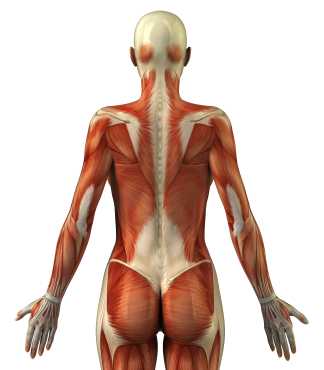How does thoracolumbar fascia influence pain?

Research completed by medical faculty of Heidelberg University in Germany aimed to better understand the characteristics of pain that can be caused by different structures or tissues within the low back. Is the information gained applicable to all layers of tissues in the body? If so, how does that assist with our structural evaluation and interventions? If not, how do various body regions reflect the findings of this study?
Researchers injected saline into tissues of the back of 12 healthy subjects at differing layers of depth and tissue; the injections were guided by ultrasound. (This method of inducing muscle pain has been utilized and refined since the 1930's.) The authors describe prior studies indicating that thoracolumbar fascia is innervated by free nerve endings, and that lumbar dorsal horn neurons receive nociceptive input from fascia; these connections are theorized to relate to fascia as a potential cause of low back pain.
The volunteer subjects were both male (6) and female (6) and none had a history of back pain. 3 sessions were scheduled with at least 5 days between study sessions. Following saline injection, the subjects rated pain at 10 second intervals for two minutes, then at 30 second intervals for the next 23 minutes. Subjects also recorded on a body chart where the symptoms occurred. Pressure pain threshold was recorded using a pressure algometer at baseline and at 25 minutes post-injection. Pain quality was assessed with an outcomes tool that listed both affective and sensory items.
The authors conclude that, in response to saline injection, the thoracolumbar fascia is more sensitive to the chemical irritation than the erector spine muscles or the overlying cutis (the dermis and epidermis, or combined layers of the skin.) Areas of recorded pain were larger for fascial injection than for skin or muscle. However, hyperalgesia to blunt pressure as measured by the pressure pain threshold device could only be created by injections into the muscle. In summary, the article states that injection to the thoracolumbar fascia "…induces intense tonic pain with a strong affective component and a pain radiation similar to acute LBP," whereas hyperalgesia to pressure "…seems to require peripheral sensitization of muscle nociceptors."
Does this research offer a window into the symptomatology and etiology of varying pain complaints? Can we direct our treatment to the tissues that appear to be at fault? The more we know about the tissues of the body, how to differentiate structurally the ways in which pathologies present, perhaps we will continue to build our clinical reasoning upon the anatomy and pathological findings. For more research and clinical applications surrounding fascia, you still have time to sign up for faculty member Ramona Horton's courses on myofascial evaluation and interventions for pelvic dsyfunction.
By accepting you will be accessing a service provided by a third-party external to https://hermanwallace.com/




































